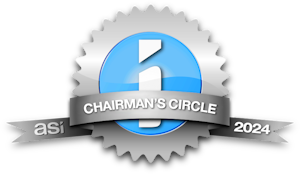
Even newbie marketers and association executives know that personalized messages deliver better results than one-size-fits-all campaigns. The more we know our members and their habits, wants, needs, preferences and influences, the better we can respond to them. It’s a win-win proposition.
Savvy associations fully embraced personalization in direct and digital marketing years ago—personal salutations, special offers for new members, and different perks for renewing or long-time members. Thanks to the comprehensive membership data management and tools available in iMIS 20, that same level of personalization can be implemented on websites.
Your members expect website personalization because they encounter it regularly on so many other sites, from retailers like Amazon (from the home page welcome of “Hi Phil” to product suggestions via “recommended for you” prompts) to social media sites like Facebook with their personalized, sometimes annoying ads (“Still looking for a hotel in New York?”).
Personalized web content seems especially appropriate for associations because it offers members an “insider” experience. A well-designed, personalized website invites new members into the fold and says to current members, “We understand who you are and what you want, and we’re here to serve you.”
That said, web personalization includes a wide range of strategies and options from role-based content to information bars and pop-ups. Associations face the challenge of determining what functionality and tools work best for their members.
To start the process of content personalization, you might think of your website as an open-house party at great destination. You want everyone who attends to have a satisfying experience. Here are some aspects to consider:
Welcome Visitors & Recognize Friends
As guests arrive at the party, the host welcomes newcomers and ensures they know where to go and feel comfortable in the setting. At the same time, the host warmly greets old friends and acknowledges the existing relationship.
Similarly, starting at the home page, web content should match each visitor’s engagement with the association. For example, prospects might view a list of ways they can connect with your association; members might see details about an upcoming conference or an opportunity to join roundtable.
Less Frustration & More Engagement
A good party offers multiple venues — a great room, filled with people and music; a game room; a dining room offering a buffet of delicious food and drinks; and perhaps, a library for more intimate conversations. While fabulous, the choices can be overwhelming. An attentive host will guide guests through the settings, helping them find the spot that best suits their needs.
Likewise, an association website should display the breadth and depth of an association’s work and services. Conferences, meetings, fund raising, advocacy, membership benefits, resources, professional development and education, job postings — these choices can overwhelm website visitors, too. Content personalization will guide each person to the destination pages they seek.
Personalization may be role-based (first-time visitors, returning guests, members) or may go deeper, responding to choices people make as they navigate the site (after clicking on a blog post, a reader is offered a link to a related event) or reflecting information you have gathered via iMIS 20 (a member in Chicago views upcoming local workshops). Either way, your website should guide visitors through relevant pages and to the information and services that are meaningful to them.
If your website design is responsive to small devices – and it should be – the HTML should also be ready for personalized content. Web design offers many options for implementing personalization, from creating whole pages to varying sections of a page (zones) to specifying lines of texts in copy.
Prominent Reminders & Timely Responses
The host of a successful party works the crowd — speaking to guests, connecting them with each other, and perhaps, inviting them to another event. Each interaction builds the relationship and deepens individual engagement — and increases satisfaction.
In the same way, association business depends on member engagement, which can rely on timely responses to invitations, membership renewals, event registration, and more. But, when the party is actually a website, how can you engage, remind, and alert members to time-sensitive events?
Information bars, used by 43% of sites implementing personalization, offer a terrific solution. The bars, usually located across the top of the screen by the navigation bar, show information prominently, but space usage is minimal. The best part: an information bar only displays when an alert/reminder is meaningful for that particular member.
Pop-ups, dialog boxes which usually appear in the middle of a page, immediately grab readers’ attention, but should be used judiciously to avoid becoming obnoxious and turning off visitors. Alternatively, widgets, graphic links which slide out of the way when not brought into focus by the reader’s mouse, offer a gentler way to personalize content and gain attention. Widgets don’t generate the same immediacy as pop-ups, so evaluate the trade-off for which one works best in each situation.
 An entertaining and enjoyable party builds relationships and makes people feel like they belong to community. Your website should do the same — make people feel like you are talking directly to them and that they are a valuable member of your association.
An entertaining and enjoyable party builds relationships and makes people feel like they belong to community. Your website should do the same — make people feel like you are talking directly to them and that they are a valuable member of your association.


